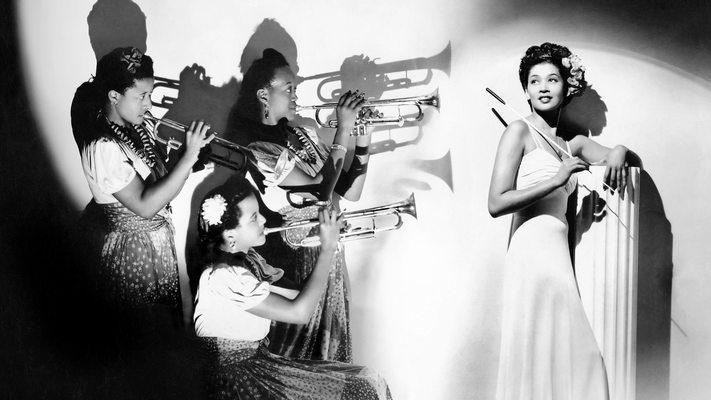Origin and Influences
Jazz first became big in New Orleans, Louisiana. The presence of French, Spanish, Creole, and African American populations created a diverse of cultural influence in New Orleans. The emergence of Jazz is often explained as the meeting of uptown of African American brass and string band tradition of blues, downtown Creole band tradition, and training in classical music.

Elements of Genre

Jazz has many different elements that has influenced its sounds we hear today. One main element is call-and-response. Call-and-response is a strong structure or performance practice in which a singer or instrumentalist makes a musical statement that is answered by another soloist instrumentalist or group. Another main element is improvisation. Improvisation is the art or act of composing, uttering, executing, or arranging anything without previous preparation. Improv allowed for many Jazz musicians to develop their own sounds.
Primary Performers of Jazz
One of the most influential Jazz singers of the 20th century was Ella Fitzgerald, also referred to as the “Queen of Jazz” and “First Lady of Song”. She could sing sultry ballads, sweet jazz and imitate every instrument in an orchestra. Ella big shift for jazz came with the rendition of “(If You Can’t Sing It) You Have to Swing It.” During this time, the era of big swing bands was shifting, and the focus was turning more toward bebop. Ella played with this new style, and often used her voice to take on the role of another horn in the band. “You Have to Swing It” was one of the first times she began experimenting with scat singing. Throughout her career, Ella would master scat singing, turning it into a form of art.
Social Implications
Jazz was a genre of new music for African-Americans. African-Americans were taking Jazz and turning it into their own new-style. Jazz became more about vocal abilities rather than being able to dance to it. Jazz became about during the Harlem Renaissance. The Harlem Renaissance was an intellectual, social, and artistic explosion that took place in Harlem, Renaissance.

Commodification

Many Jazz performers gained a profit by performing for crowds of many different races. Though Ragtime was when African-Americans started making a profit of their music, it was an increase with the genre of Jazz. Jazz musicians were able to put their own name to their music and make it their own.
Inflluence on Other Genres
Jazz is a genre that still has its influence on many genre’s today like rock, pop, and hip-hop. Like Jazz, many of these genres use improvisation to compose their music and lyrics, especially with their performances. Many modern artist use Jazz performers in their songs or in their performances like Beyonce with her all-female band.
Summary
Jazz is one of the first African-American genres that is still widely known today. Jazz allowed for individualism and cultural diversity. It is the genre where one artists sound can completely differ from another’s. It will continue to be so diverse and listeners will always find something different in an artist’s style.

